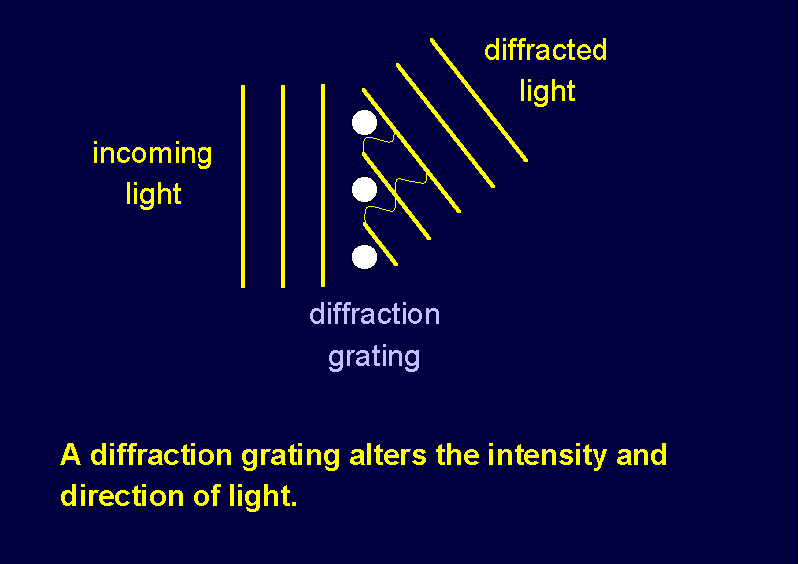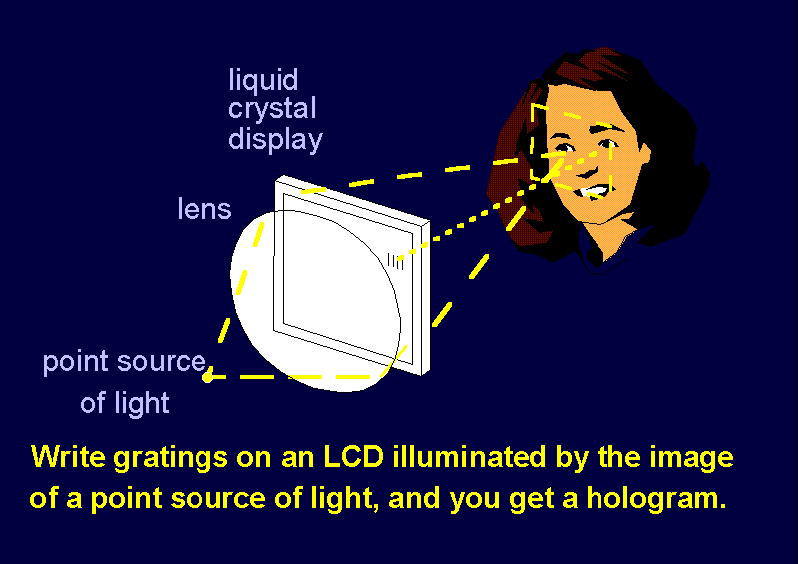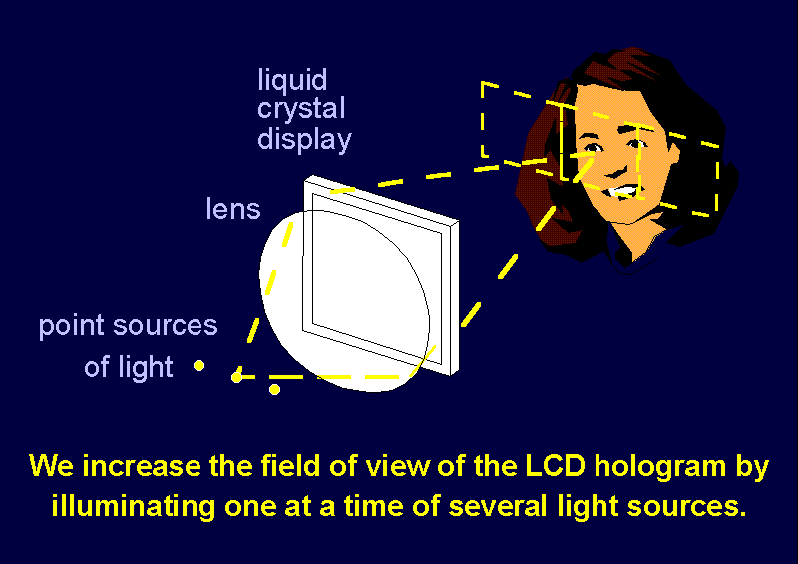

In order to display a hologram on a liquid crystal display, it should be illuminated with the image of a point source of light, i.e. with rays of light which converge to a point. Many diffraction gratings can then be written on the screen, and by varying the position, periodicity and opacity of the gratings a holographic 3D image can be displayed.
